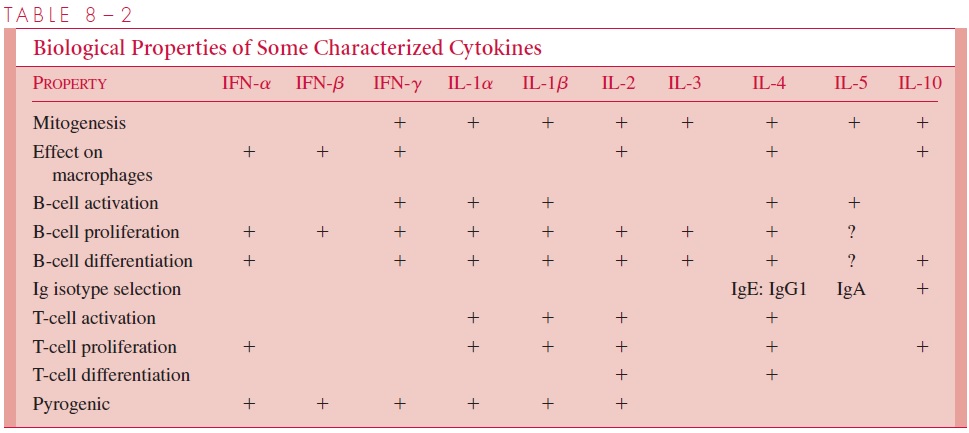Chapter: Medical Microbiology: An Introduction to Infectious Diseases: Immune Response to Infection
Immuno Responsive Cells
THE IMMUNO RESPONSIVE CELLS
The function of the immune system requires antigen-specific lymphocytes of two major types (Table 8 – 1) and cytokines. T cells are thymus-derived lymphocytes and B cells are bone marrow – derived lymphocytes. Cytokines are secreted polypeptides that modulate the functions of cells (Table 8 – 2). Those produced by mononuclear cells (ie, lympho-cytes and mononuclear phagocytic cells) are called interleukins. These regulate the growth and differentiation of lymphocytes and hematopoietic stem cells and the interac-tions among T cells, B cells, and monocytes in the elaboration of an immune response (see later discussion).

T cells are responsible for (1) the initiation and modulation of immune responses (including B-cell responses); (2) cell-mediated immune processes that involve direct damage to antigen-bearing tissue or blood cells (eg, virally infected host cells); and (3) stimulation and enhancement of the nonspecific immune functions of the host (eg, the in-flammatory reaction and antimicrobial activity of phagocytes). T cells are classified by the presence of the surface molecules called CD4 and CD8, which in turn are related to functional activities classified as helper, suppressor, or cytotoxic.

B cells are responsible for humoral immunity through antibody production. Individual B cells have antibody of a single specificity on their surface that can bind directly to for-eign antigens. B cells can also differentiate into plasma cells, which produce a soluble anti-body that can circulate in blood and body fluids independent of cells. T and B cells are found throughout the body, particularly in the bone marrow; specialized areas of the lymph nodes and spleen; lymphoid structures adjacent to the alimentary and respiratory tracts (eg, Peyer’s patches and adenoids); and subepithelial tissues of the internal organs. They are continually replaced, and there is considerable circulation of B and T cells between the different areas of the body through the lymphatic and blood vascular circulations.
Related Topics